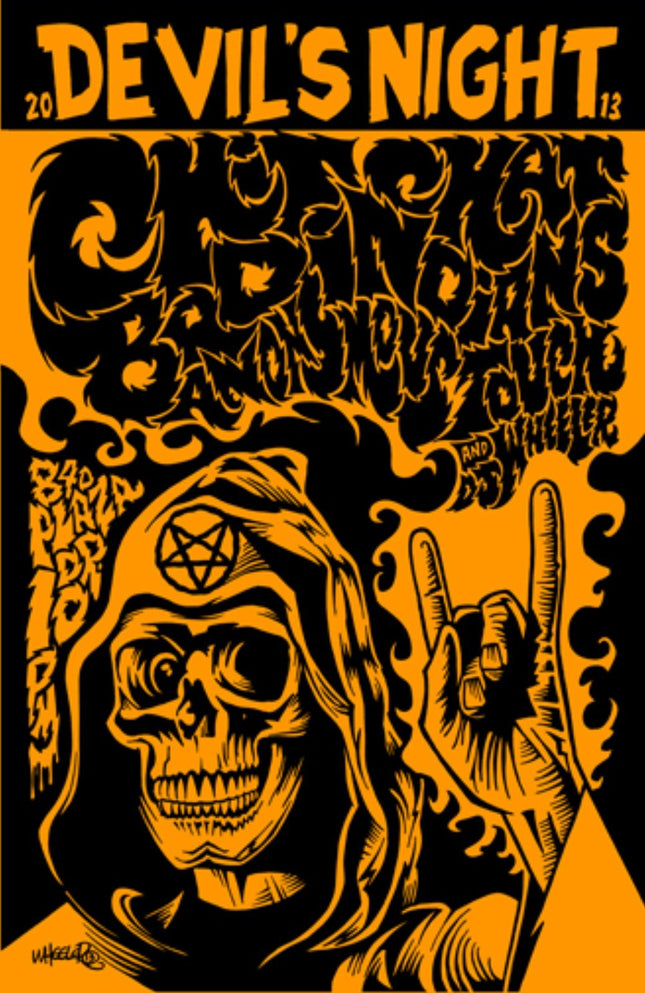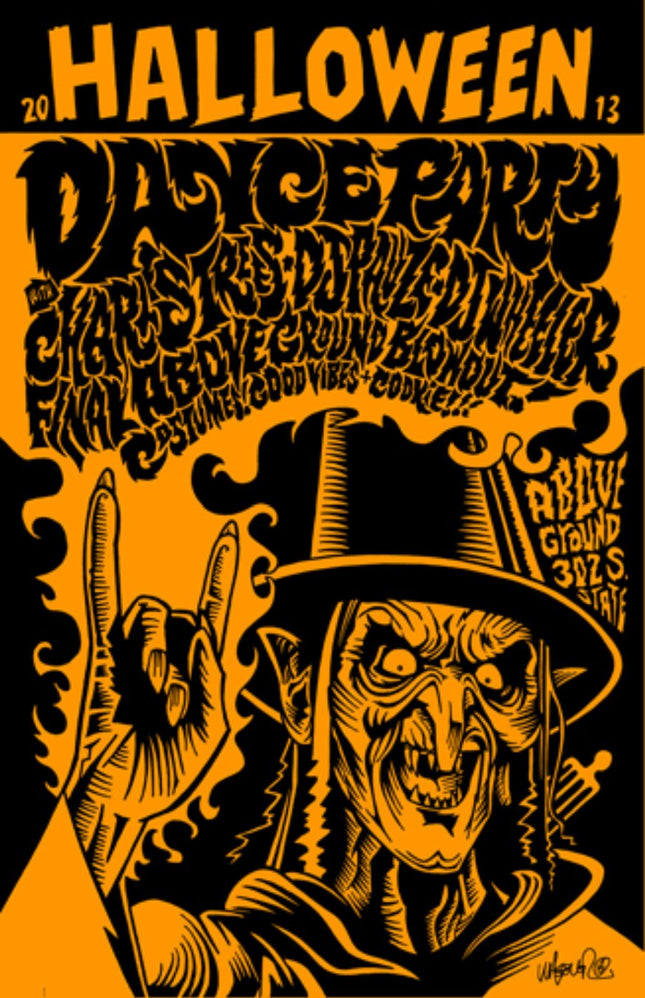
Devil Demons & Satan

Justin Anville 1919 Pelican Tombs Pennsylvania 2009 Silkscreen Print by Justin Anville
1919- Pelican Tombs- Pennsylvania 2009 Music Limited Edition Gig Poster 4-Color Hand-Pulled Silkscreen Print Artwork on Fine Art Paper by Justin Anville. 2019 Signed & Numbered Limited Edition Gig Music Poster Artwork Size 18x24. 919, Pelican Tombs, Music, Event, Theatre of Living Arts, Philadelphia, Pennsylvania, June 3rd 2009, Live Nation The Synthesis of Music and Street Pop Art The convergence of music and visual arts often produces memorabilia that transcends the moment of its creation, embedding itself in the cultural fabric of a time and place. Such is the case with the limited edition gig poster for the event featuring "1919" and "Pelican Tombs" held at the Theatre of Living Arts in Philadelphia, Pennsylvania, on June 3rd, 2009. This striking piece of street pop art and graffiti artwork is a celebration of both the bands and the evocative power of graphic design within the realm of music. This limited edition gig poster is more than just a promotional tool; it is a collectible artwork that reflects the vibrancy and raw energy of the musical acts it represents. Created by the artist Justin Anville, the print is a four-color, hand-pulled silkscreen on fine art paper, a technique that lends the artwork a tactile quality that is both immediate and engaging. The choice of silkscreen printing, a favored method in both street art and pop art for its bold colors and sharp lines, allows the piece to stand out with a visual pop that mirrors the intensity of the live music experience. Visual Elements and Artistic Significance The artwork commands attention with its intricate design and contrasting color palette, which features a dominant red against a backdrop of more subdued tones. At the center, the stylized numerals "1919" are prominently displayed, intertwined with symbolic imagery that suggests a narrative extending beyond the bands' names. This typographic treatment is reminiscent of graffiti art, where letters become an integral part of the visual impact, often carrying meaning in their form as much as in their content. Cultural Imprint of the 2009 Event Poster Limited to a signed and numbered edition, the poster carries with it an aura of exclusivity. Measuring 18x24 inches, it is a sizable piece that was designed to be noticed, to be a talking point, and ultimately, to be remembered. As a piece of memorabilia, it serves as a timestamp, capturing the cultural zeitgeist of the late 2000s Philadelphia music scene, a period marked by a resurgence in indie and alternative genres. The inclusion of the Live Nation brand also signifies the commercial and mainstream acknowledgment of the genres and bands, hinting at their movement from the fringes into the spotlight. The Legacy of Gig Posters in Street Pop Art The significance of gig posters like this one extends beyond the night of the event itself. They are artifacts of cultural history, capturing the essence of musical movements and the artistic styles that accompany them. In the broader context of street pop art and graffiti artwork, gig posters are often the crossroads where music and visual art fans meet, share, and appreciate the interplay between these forms of expression. This particular poster, with its bold aesthetic and connection to a specific time and place, is a perfect illustration of how street art and music can come together to create something enduring. In the ever-evolving dialogue between music and visual arts, the 2009 limited edition gig poster for "1919" and "Pelican Tombs" stands as a testament to the power of this collaboration. It is not just a promotional item; it is a snapshot of a scene, a piece of street pop art, and a collectible that holds within its inks and paper the echoes of a night of music and the spirit of its time.
$238.00$167.00

Jeremy Wheeler Devil's Night 2013 Silkscreen Print by Jeremy Wheeler
Devil's Night 2013 Limited Edition 1-Color Hand-Pulled Silkscreen Print on Orange Fine Art Paper by Jeremy Wheeler Graffiti Street Artist Modern Pop Art. Devils Night Halloween Music Event, 2013 Featuring Chit Chat
$99.00$69.00

Jeremy Wheeler Devil's Night 2013 Halloween Silkscreen Print by Jeremy Wheeler
Devil's Night 2013- Halloween Limited Edition 1-Color Hand-Pulled Silkscreen Print on Orange Fine Art Paper by Jeremy Wheeler Graffiti Street Artist Modern Pop Art. Devils Night Halloween Music Event, 2013 Featuring Dance Party
$99.00$69.00




